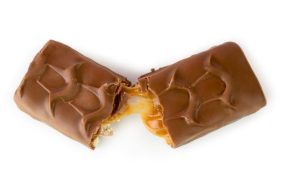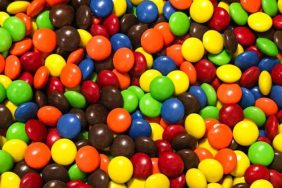Two countries in the world have the fine distinction of supplying the world’s best chocolate: Belgium and Switzerland. When I asked locals in Zurich whether any rivalry existed, they all said no. They went on to explain it’s a case of blissful ignorance. When there’s so much melt-in-your-mouth chocolate at home, there’s no reason to go elsewhere, and Belgian chocolate is absent from Swiss supermarket shelves. There are major differences between Belgian and Swiss chocolate, as well as local taste buds.
Swiss chocolate, with a higher milk and sugar content, and less cocoa, is creamier. Think of Lindt balls and how easily they melt, while Belgian chocolate is made with more cocoa, and retains its natural aroma, making better dark chocolate.
The Swiss love their milk chocolate. They consume more chocolate than any other nation, and 80% of it is milk. Most Swiss eat one small chocolate bar every day. This was evidenced by Costco-sized bulk boxes of 3.5oz bars of the milky stuff promoted in every grocery store.
In a city which feels slightly like a real-life Willy Wonka factory, it’s important to know which chocolatiers are worth a taste, so I signed up for a tour with Kerrin Rousset, an American expat obsessed with sugary stuff. Her Sweet Zurich walking tours are small, and cover about a half-dozen of the city’s sweet stops.
The tour begins at one of Switzerland’s legendary chocolate-makers: Sprüngli. Their shops are all over the city, but Kerrin encourages visitors to try the Luxemburgerli, a Swiss take on a macaron. They’re good if you like macarons, but I think Sprüngli’s “truffe de jour,” is really what’s special. I assumed it meant a different flavor truffle was produced every day, but, instead, they’re plain truffles so fresh they can only be eaten on the same day.
One taste and I was hooked on these round orbs of pleasure, but at about $3 each, it was easy to pace myself. Sprüngli isn’t just for tourists. Kerrin explained local business people populate the coffee bar at breakfast and lunch, and families regularly come for birthday cakes and ice cream. I drooled over a truffle cake which is on my list for next time.
Our next stop at Honold was the highlight. It’s been around since the beginning of the 20th century and is known for its liqueur chocolates and nougats. The trick, Kerrin says, is knowing the chocolatiers and their individual specialties.

We sat down for a nougat tasting. The croquant nougat au lait looks like an A-frame ski chalet, with a hazelnut gianduja base and two thick, crunchy wafers for a roof. It’s a substantial hunk, but I prefer one of Honold’s signature pieces, Lotti’s Best. Crumbly nougat is wrapped in fine, paper-thin layers, covered in chocolate and a pinch of fleur de sel. The texture is exactly like a Butterfinger, but the flavor is softer, more like a honey-nut crunch.
The tour winds its way through the cobble-stoned streets of Zurich’s old town, stopping at an artisan chocolate shop, where bars are sourced from single producers in tiny villages, who customize flavors in small batches. And we finish at Zurich’s oldest confectionary, where hot chocolate is the specialty. It’s a tourist hot-spot, but charming, nonetheless.
Kerrin can work her tour around short layovers, but if time doesn’t permit, it’s easy enough to do your own chocolate tasting. Switzerland’s two main supermarkets are Migros and Coop. Loyalty to each store runs deep, particularly with Migros, where they only sell their own Frey brand chocolate.
It’s very high quality, and some say it’s superior to some of the brands they copy. Others shop at Coop, where most of Switzerland’s chocolate bars are available. The aisles are stacked end to end with every chocolate combination imaginable, from extra milky, to pistachio-filled, to orange flavored and more. Pack your suitcase with precious bars and try a taste test at home.








